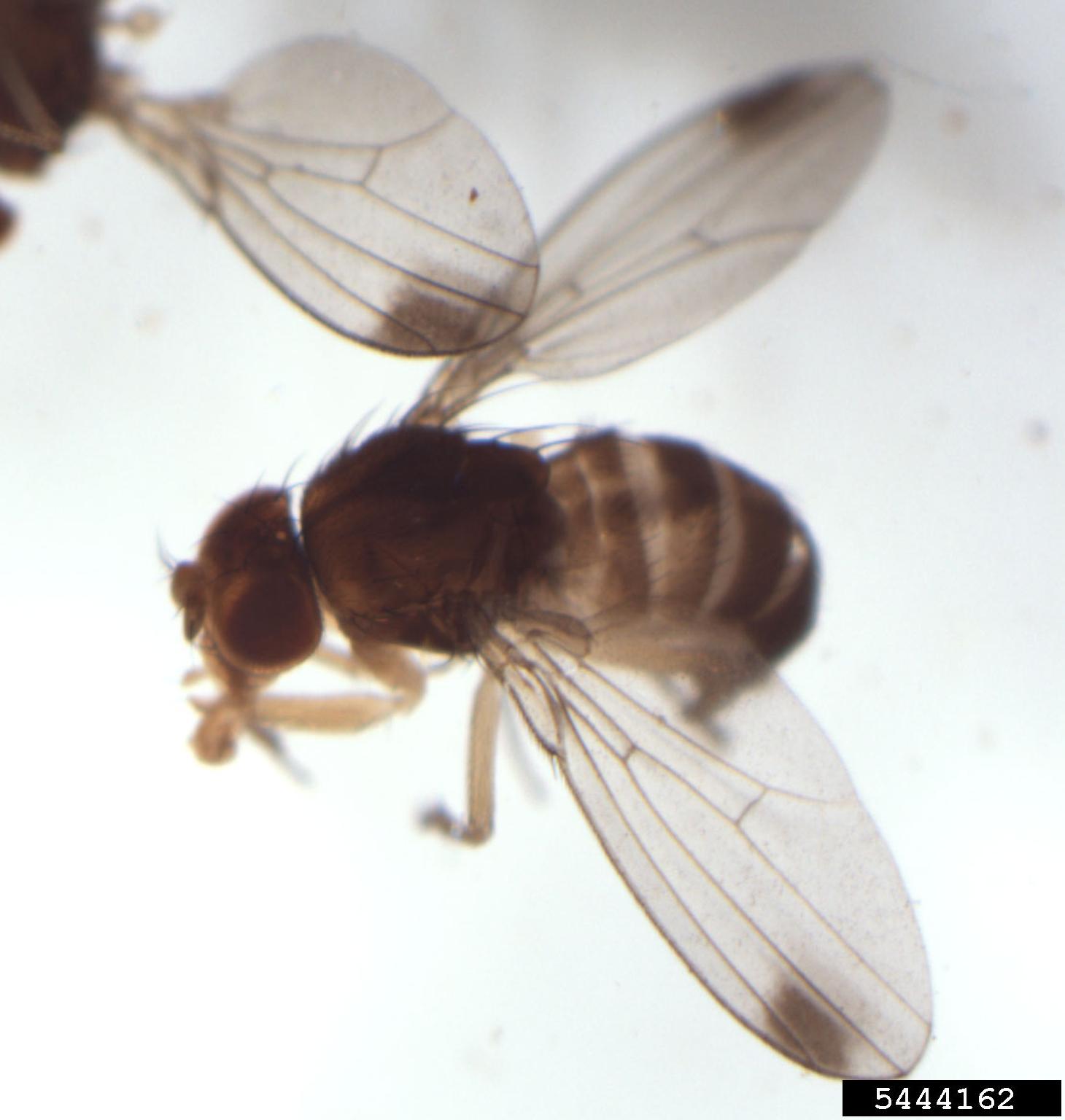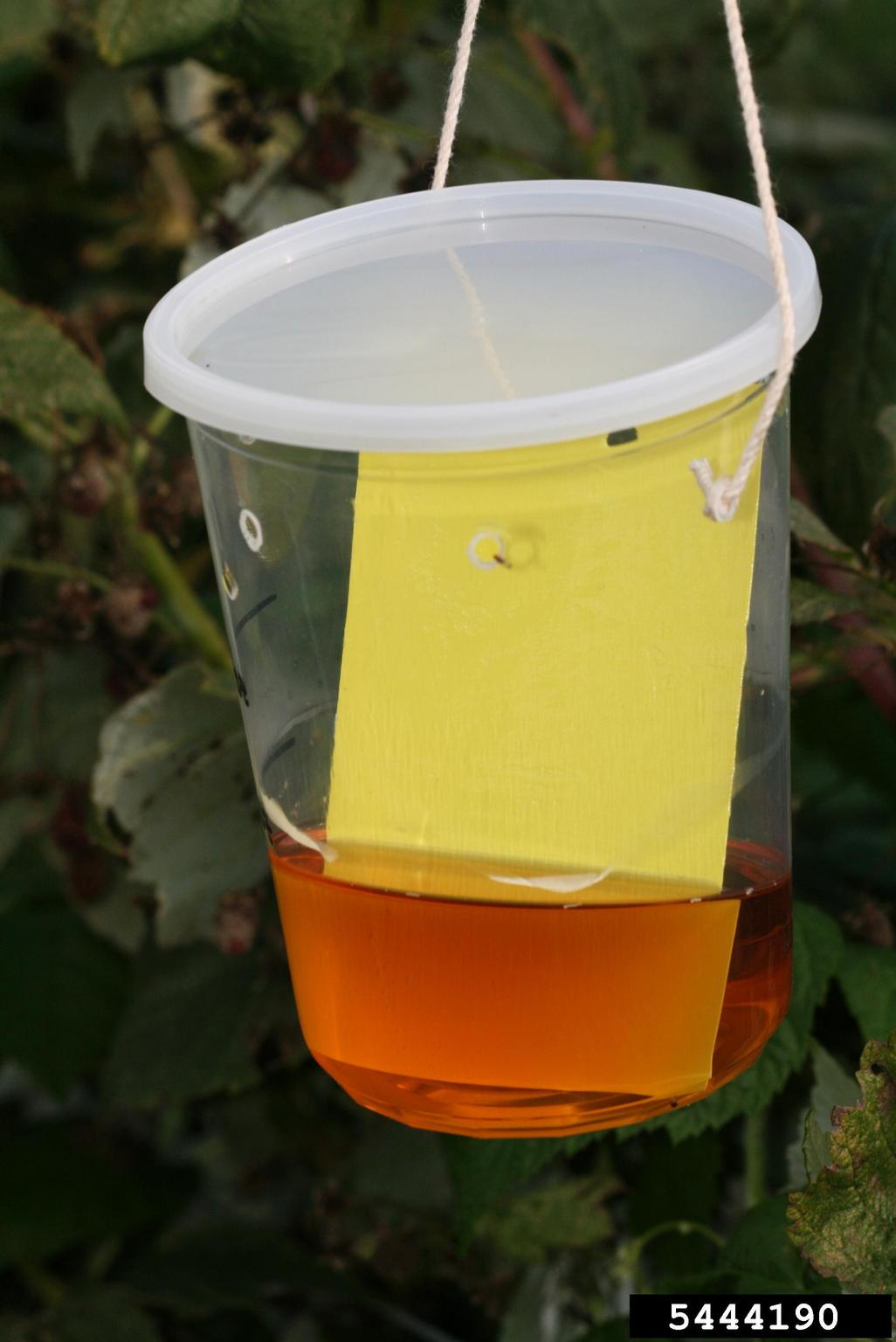Hatching plans for pest control
20 February 2019
In this article originally published in Cherry Magazine, Andrew Cooke writes that researchers are preparing for potential incursion into Australia of an insect that has caused widespread damage in North America and Europe.
Australian scientists are drawing up plans against a damaging insect pest that has spread across much of North America and Europe in the past decade. The spotted wing drosophila (Drosophila suzukii), which attacks a variety of fruits but is particularly attracted to berries and cherries, has never been found in Australia but is considered a high risk for economic damage to the cherry industry if it gets into the country.
Contingency planning

A project funded by Hort Innovation aims to support an informed and coordinated response if the insect does find its way into Australia. cesar researcher Dr Jessica Lye says the culmination of the work will be a “contingency plan” to guide actions in the event of an incursion of spotted wing drosophila in Australia.
Dr Lye conducted a series of seminars and ‘preparedness days’ in cherry-growing areas around Australia in late 2018 to provide information to growers on the threat posed by the insect and how to identify it. Experts from Michigan in the US and East Malling in England addressed seminar attendees about their experience with the pest.
Dr Lye says Australia has a sophisticated plant pest incursion response system that allows any incursion to be assessed “in a strategic manner between governments and affected industries”.
“However, biosecurity professionals who are engaged in plant pest incursion response will always benefit from having access to scientifically robust and up-to-date information about emergency plant pests such as spotted wing drosophila,” she says.
“As with any emergency plant pest incursion, it would be governments and the industry bodies signed up to the Emergency Plant Pest Response Deed that would lead any incursion response for spotted wing drosophila. If there is a detection and a response, this project will be well-placed to provide technical advice to these responders.”
Global concern
Information released by cesar for the seminars says spotted wing drosophila – a native of Eastern Asia – is rapidly becoming a global concern, having recently spread to North America, South America and Europe.
“With a short generation time, the ability to reproduce on a wide variety of soft-skinned fruits, and cryptic appearance, this fly is of high biosecurity concern to horticulture,” it says.
“When the pest was accurately identified (in California in 2008) it was realised that this was a species capable of damaging fruit prior to harvest. This is because it has a serrated ovipositor, adapted to piercing the skin of developing fruit (to lay eggs).
“An outbreak in Australia would have a significant impact. While crop losses of 20 to 40 per cent are commonly reported, if left unmanaged losses from this pest could reach 80 per cent in susceptible fruits. Among the most susceptible crops are strawberries, cane berries, blueberries and cherries, with summer fruit and table grapes also impacted. The estimated production value of these industries is over $1.6 billion.”
Speaking at the growers seminar in Wandin, Victoria, in October, Michigan researcher Professor Rufus Isaacs said spotted wing drosophila had become a serious pest of North American horticultural industries, including in the Great Lakes district of his state, where blueberries are a native plant as well as a major crop.
“Spotted wing drosophila can move very quickly – it has moved across North America since it was first detected in California in 2006 and is now present in most states. It has an adaptation which allows it to survive very cold winter temperatures, down to minus 30°C, a 12- day life cycle and the females lay about 300 eggs,” Professor Isaacs said.
“The female has a well-developed ovipositor that can cut into fruit from the time that the fruit starts to turn colour. It has a broad range of host crops, although mostly berries and cherries, but it also has a lot of wild hosts, such as blackberries, which can make control very difficult.”
Professor Isaacs said pest pressure on crops was affected by temperature and humidity, with high temperatures and low humidity helping to reduce infestations.
“Australia’s relatively low humidity should help with control, if spotted wing drosophila ever gets into the country,” he said.
Management practices

Horticultural management practices that had been shown to help control the pest in North America included pruning, choice of growing system, exclusion netting and increasing harvest frequency, he said. “The number one thing is to make the orchard less favourable for the pest,” he said.
“Then it is a matter of monitoring (with traps) during spring: sampling fruit for larvae prior to and during harvest; and then protecting ripening and susceptible fruit with chemical sprays.” There were several chemical options, he said, some of which are organic-certified.
UK researcher Bethan Shaw told the seminar that spotted wing drosophila was first detected in England in 2012 and by 2017 it was costing horticulture A$35 million to A$50 million a year.
“The main problem with controlling this pest is that the majority of its life cycle is within the fruit, so there is only a limited window in which you can attack it,” Ms Shaw said.
“There is no single method of control – there has to be an integrated use of various measures to ensure control. But the bottom line is that it is manageable … It is just the growers who do nothing and bury their heads in the sand who really suffer with this pest.”
Important control measures include removing all non-marketable fruit from orchards so that adult drosophila could not feed on it; placing harvested fruit into cold storage as quickly as possible: and ensuring good communication between neighbours so that everybody is aware of the risks and following management protocols.
Agriculture Victoria’s state-wide fruit fly coordinator, Cathy Mansfield, said the Victorian Government would respond to any incursion of spotted wing drosophila in Victoria. “Agriculture Victoria would investigate the incident. confirm identification and spread. and would work with industry to manage a response,” she said.
Spotted wing drosophila is listed as a serious economic threat to soft summer fruit in the draft Plant Health Australia biosecurity plan for the cherry industry. Its potential for entry to Australia and potential establishment, spread and economic impact are all rated as “high”.
Project to boost response capacity
The Hort Innovation project “Improving our preparedness for spotted wing drosophila: understanding the enemy to better arm industry” (MT17005) will run until June 2020. Its objectives are to increase the chance of detection and reporting of spotted wing drosophila through increased awareness and knowledge of the pest, and to improve Australia’s capacity to respond effectively to any incursions of the pest.
It aims to do this by:
- Reviewing potential entry pathways for Australia, the impacts of spotted wing drosophila overseas, and preparedness and response capability in Australia.
- Reviewing overseas management practices and incursion response protocols to support preparation of appropriate management plans and control permits.
- Developing a cross-commodity contingency plan. including optimum surveillance protocols; and running an awareness and education campaign for potentially affected industries.
“The cross-commodity contingency plan that we will develop will be a valuable guiding resource in the event of an incursion,” Dr Lye says.
For more information contact Dr Jessica Lye at jlye@cesaraustralia.com or on 03 9349 4723.
Acknowledgement: This article was originally published in Cherry Magazine which is funded by Hort Innovation using the cherry levy.